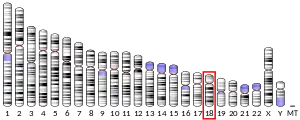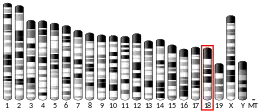| COLEC12 | |||||||||||||||||||||||||||||||||||||||||||||||||||
|---|---|---|---|---|---|---|---|---|---|---|---|---|---|---|---|---|---|---|---|---|---|---|---|---|---|---|---|---|---|---|---|---|---|---|---|---|---|---|---|---|---|---|---|---|---|---|---|---|---|---|---|
| |||||||||||||||||||||||||||||||||||||||||||||||||||
| Identifiers | |||||||||||||||||||||||||||||||||||||||||||||||||||
| Aliases | COLEC12, CLP1, NSR2, SCARA4, SRCL, collectin subfamily member 12 | ||||||||||||||||||||||||||||||||||||||||||||||||||
| External IDs | OMIM: 607621 MGI: 2152907 HomoloGene: 34248 GeneCards: COLEC12 | ||||||||||||||||||||||||||||||||||||||||||||||||||
| |||||||||||||||||||||||||||||||||||||||||||||||||||
| |||||||||||||||||||||||||||||||||||||||||||||||||||
| |||||||||||||||||||||||||||||||||||||||||||||||||||
| |||||||||||||||||||||||||||||||||||||||||||||||||||
| Wikidata | |||||||||||||||||||||||||||||||||||||||||||||||||||
| |||||||||||||||||||||||||||||||||||||||||||||||||||
Collectin-12, also known as collectin subfamily member 12, is a collectin protein that in humans is encoded by the COLEC12 gene.[5]
Function
This gene encodes a member of the collectin family, proteins that possess collagen-like sequences and carbohydrate recognition domains. This protein is a scavenger receptor that displays several functions associated with host defense. It can bind to carbohydrate antigens on microorganisms, facilitating their recognition and removal. It also mediates the recognition, internalization, and degradation of oxidatively modified low density lipoprotein by vascular endothelial cells. [provided by RefSeq, May 2018].
References
- 1 2 3 GRCh38: Ensembl release 89: ENSG00000158270 - Ensembl, May 2017
- 1 2 3 GRCm38: Ensembl release 89: ENSMUSG00000036103 - Ensembl, May 2017
- ↑ "Human PubMed Reference:". National Center for Biotechnology Information, U.S. National Library of Medicine.
- ↑ "Mouse PubMed Reference:". National Center for Biotechnology Information, U.S. National Library of Medicine.
- ↑ "Entrez Gene: Collectin subfamily member 12". Retrieved 2019-12-24.
Further reading
- Ohmori H, Makita Y, Funamizu M, Chiba S, Ohtani K, Suzuki Y, Wakamiya N, Hata A (2003). "Haplotype analysis of the human collectin placenta 1 (hCL-P1) gene". J. Hum. Genet. 48 (2): 82–5. doi:10.1007/s100380300011. PMID 12601552.
- Yoshida T, Tsuruta Y, Iwasaki M, Yamane S, Ochi T, Suzuki R (March 2003). "SRCL/CL-P1 recognizes GalNAc and a carcinoma-associated antigen, Tn antigen". J. Biochem. 133 (3): 271–7. doi:10.1093/jb/mvg037. PMID 12761161.
- Coombs PJ, Graham SA, Drickamer K, Taylor ME (June 2005). "Selective binding of the scavenger receptor C-type lectin to Lewisx trisaccharide and related glycan ligands". J. Biol. Chem. 280 (24): 22993–9. doi:10.1074/jbc.M504197200. hdl:11858/00-001M-0000-0011-5639-F. PMID 15845541.
- Selman L, Skjodt K, Nielsen O, Floridon C, Holmskov U, Hansen S (June 2008). "Expression and tissue localization of collectin placenta 1 (CL-P1, SRCL) in human tissues". Mol. Immunol. 45 (11): 3278–88. doi:10.1016/j.molimm.2008.02.018. PMID 18423602.
- Jang S, Ohtani K, Fukuoh A, Yoshizaki T, Fukuda M, Motomura W, Mori K, Fukuzawa J, Kitamoto N, Yoshida I, Suzuki Y, Wakamiya N (February 2009). "Scavenger receptor collectin placenta 1 (CL-P1) predominantly mediates zymosan phagocytosis by human vascular endothelial cells". J. Biol. Chem. 284 (6): 3956–65. doi:10.1074/jbc.M807477200. PMID 19073604.
- Samsen A, Bogoevska V, Klampe B, Bamberger AM, Lucka L, Horst AK, Nollau P, Wagener C (January 2010). "DC-SIGN and SRCL bind glycans of carcinoembryonic antigen (CEA) and CEA-related cell adhesion molecule 1 (CEACAM1): recombinant human glycan-binding receptors as analytical tools". Eur. J. Cell Biol. 89 (1): 87–94. doi:10.1016/j.ejcb.2009.11.018. PMID 20034698.
- Davila S, Froeling FE, Tan A, Bonnard C, Boland GJ, Snippe H, Hibberd ML, Seielstad M (April 2010). "New genetic associations detected in a host response study to hepatitis B vaccine". Genes Immun. 11 (3): 232–8. doi:10.1038/gene.2010.1. PMID 20237496.
- Rose JE, Behm FM, Drgon T, Johnson C, Uhl GR (2010). "Personalized smoking cessation: interactions between nicotine dose, dependence and quit-success genotype score". Mol. Med. 16 (7–8): 247–53. doi:10.2119/molmed.2009.00159. PMC 2896464. PMID 20379614.
- Graham SA, Antonopoulos A, Hitchen PG, Haslam SM, Dell A, Drickamer K, Taylor ME (July 2011). "Identification of neutrophil granule glycoproteins as Lewis(x)-containing ligands cleared by the scavenger receptor C-type lectin". J. Biol. Chem. 286 (27): 24336–49. doi:10.1074/jbc.M111.244772. PMC 3129213. PMID 21561871.
This article incorporates text from the United States National Library of Medicine, which is in the public domain.



